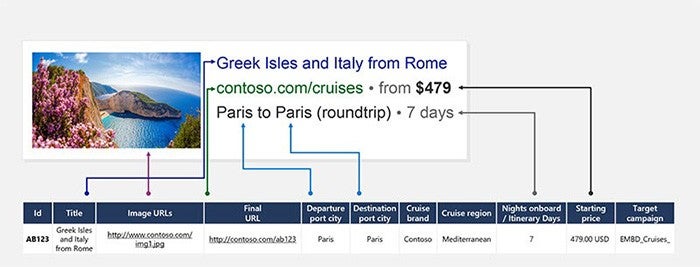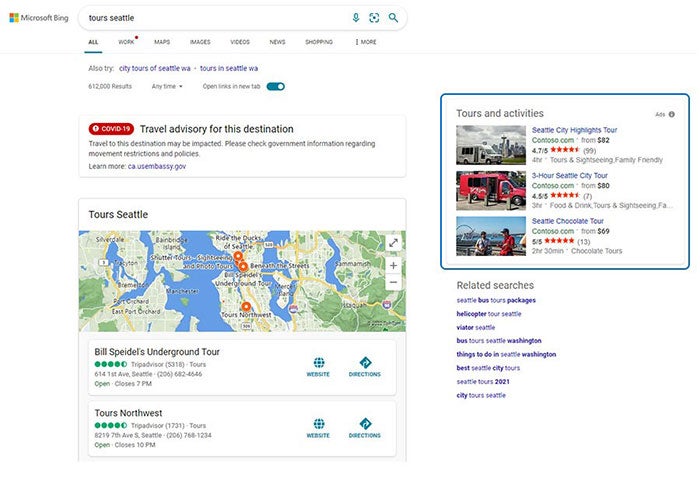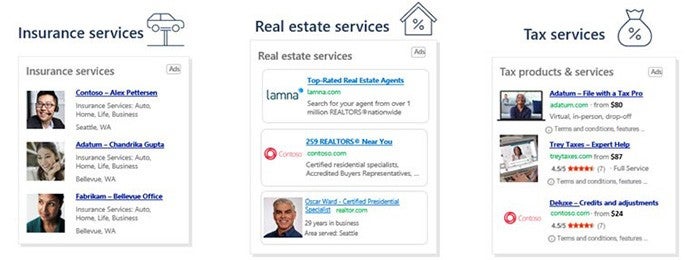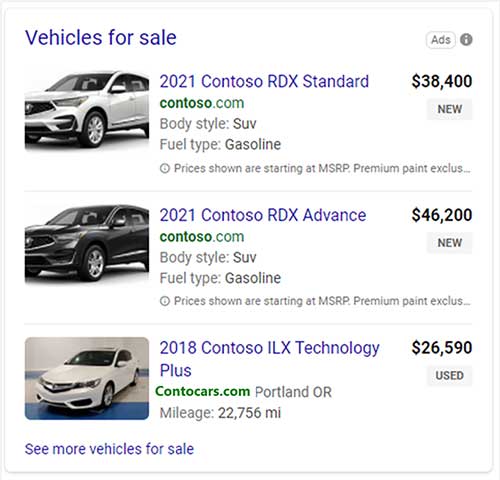Blog post
Keep performance high with vertical ads

In changing times, amid increased regulations and legislation addressing consumer privacy concerns, you’re planning ad campaigns and wondering how to maintain performance. As you prepare your campaigns for the second half of the year, there are simple solutions you may not have considered.
Consumers are engaging more with imagery and personalized messages.1 They often go online with a goal and shop within a specific category. They may be looking for their next vacation, a new car, or financial services advice. Each of those categories is specific and unique.
When consumers see advertising that precisely meets their needs, they’re more likely to engage and convert.2
So, if you’re planning to maintain or increase your performance for the second half of the year, plan on using vertical ads. They don’t require additional work and they’re quick and easy to set up, giving you a head start in earning attention.
What are vertical ads?
We believe that each sector has its own peculiarities, and we’ve created vertical ads to address them. While shopping for groceries, a customer might look at the store’s location, organic attributes, or hours of operation as essential points. Meanwhile, a cruise enthusiast will want to know about the departure and destination ports or read peer reviews but will be less interested if that cruise ship was built “organic.” Clearly, these ads should feature different information, so we asked, “Why not build an ad that features the most critical information for that shopper instead of one-size-fits-all?”
Vertical ads balance what consumers want with what’s important for advertisers while reflecting on what makes each industry unique. We’ve expanded our vertical ads portfolio as consumers indicate a high demand for these ads, and performance data shows high conversion volumes at low costs.2
How vertical-based ads work
Vertical ads are different for each category or industry. They focus on information that a specific consumer is looking for and provide it in an engaging, easy-to-read format, pre-click, and with images.

Vertical ad content comes from dynamic data feeds. They use search intent data and a deep understanding of users’ needs to connect customers to richer ad experiences that break through the clutter. Microsoft artificial intelligence (AI) uses these feeds to source all attributes displayed in the ads, using advertisers’ existing digital catalogs. It also minimizes the time and resources required to set up and manage campaigns on our network.
Industries with vertical ads
Building on past success, we’re bringing new ad experiences to market across the Travel, Financial Services, and automotive industries. Our pivot towards vertical-based ads in these industries results from customer feedback and our desire to help advertisers make gains in crowded marketplaces. Our vertical experiences serve across the Microsoft Search Network and Microsoft Audience Network. No matter what industry, we’ve got you covered.
Travel
Industry experts believe consumers will be traveling more this year than in the last two years.3 When planning for travel, shoppers go online with an idea of the type of travel they’re interested in. You can shorten their path to purchase.

Travelers looking for cruises, tours and activities, and hotel rooms search for specific types of information. Vertical ads provide them that information pre-click and make shopping easier, faster, and more enjoyable—starting their travel experience off on precisely the right note. Current vertical ads in Travel include the following:
- Cruise Ads* are rich and eye-catching ad solutions that showcase images with timely and relevant cruise information such as length, excursions and pricing.
- Hotel Price Ads are search ads that showcase rich photographs and real-time pricing information with action taken within the search experience.
- Property Promotion Ads are highly visual, curated, premium ad experiences that appear in the top two slots on the hotel grid in Bing Maps.
- Tours and Activities Ads are visually engaging feed-based ads that increase awareness and drive bookings.
Results example: The average Tours and Activities Ads exceeded return on ad spend (ROAS) and cost per acquisition (CPA) targets by 24%, and outperformed text ad ROAS by 16%.2
Financial Services
The shifting economy means consumers are looking to make changes and seeking professionals to advise them. The use of credit cards has risen over the last year,3 and real estate is at a record high.4 Health insurance has been a mainstay in consumer concerns, especially during the pandemic,5 and taxes are something we all must manage yearly or more often.
While they each have high demand for different reasons, what people look for is different too. Someone seeking a new credit card may be interested in rewards and promotions, while a consumer looking to purchase a house will want expertise and home listings. We’ve built these ads to showcase what they care about most.
It’s easy to see why Microsoft Advertising has invested in vertical ads for these Financial Services. Using them can help you engage with these customers when they seek solutions online. Here are our current offerings:
- Real Estate Ads can promote individual agents, listings, certifications and other information.
- Health Insurance Ads* trigger non-brand queries such as generic Medicare and plan-type queries (promoting specific plans is not yet supported).
- Insurance Services Ads include data specified in feed files such as plan type, the organization category, federal registration status and URLs.
- Tax Services Ads highlight the benefits of tax specialists; offices; local, regional and national offices; and other information.
- Credit Card Ads* showcase various credit card products and promotions such as rewards and cashback percentages.
Results example: Advertisers running Credit Card Ads have seen up to a 36% lift in conversion rate and 70% lower CPA than text ads.2

Automotive
Automotive Ads can help sell off 2022 inventory and increase demand as consumers look toward announcements on new models. This year, auto show dates have shifted, with the North American International Auto Show happening for the first time in September. Grab the attention of car seekers and the curious by planning with vertical ads that highlight your inventory and dealerships.
Cristiano Ventura, Principal Program Manager, Microsoft Advertising
- Automotive Ads showcase the attributes of your car inventory, such as makes, models, years, trims, images, URLs, and other information.
Results example: Advertisers running Automotive Ads saw a 6-15% incremental click rate lift, a 3-8% conversion rate lift, and a 28-40% lower cost per click than their corresponding non-brand targeted text ads.2

As you plan for the rest of the year, consider vertical experiences as a vital component for engaging with consumers and maintaining or increasing ad performance. Instead of using a generic ad approach, try vertical ads specific to your industry.
* Exclusive to Microsoft Advertising.
[1] Forrester, “The cost of Losing Creativity,” June 2019 (https://go.forrester.com/wp-content/uploads/2019/06/The-Cost-Of-Losing-Creativity.pdf).
[2] Microsoft internal data, 2021.
[3] New York Times, “Travel’s Theme for 2022? ‘Go Big,’” February 2022 (https://www.nytimes.com/2022/02/15/travel/trends-spring-2022.html).
[3] CNBC: “Only a small number of people are swapping cash for credit during coronavirus, but this expert says that will change,” January 2022 (https://www.cnbc.com/select/credit-card-usage-coronavirus/).
[4] Bloomberg: “The Hot Housing Market Makes the Fed’s Inflation-Fighting Job Even Tougher,” May 2022 (https://www.bloomberg.com/news/articles/2022-05-03/housing-market-prices-rise-worsen-inflation-dilemma).
[5] McKinsey: “How COVID-19 has changed the way US consumers think about healthcare,” June 2021 (https://www.mckinsey.com/industries/healthcare-systems-and-services/our-insights/how-covid-19-has-changed-the-way-us-consumers-think-about-healthcare).





